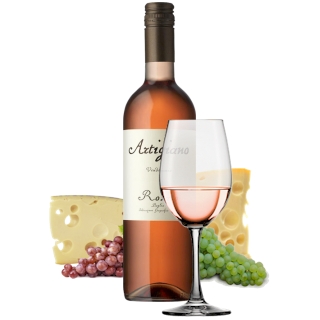
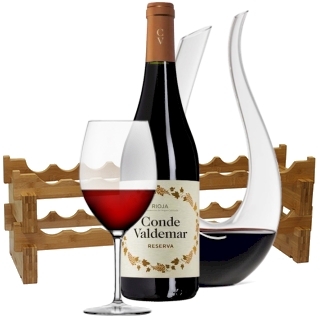
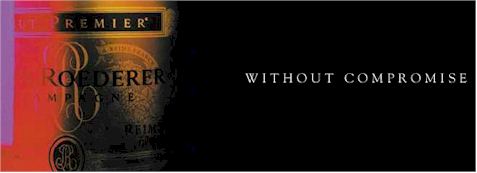
In the period 1832 to 1870, under the direction of Louis Roederer, the house gained top ranking worldwide with sales of 2,500,000 bottles, including 390,000 in the United States and 660,000 in Russia where Louis Roederer champagne was an outstanding success. In 1876, Louis Roederer II who had succeeded his father created the Cristal Cuvée for Tsar Alexander II. Louis Roederer identified Russia as his special priority, and sales there quickly grew to as much as 60 per cent of total shipments.
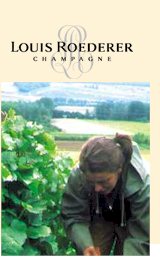
Louis Roederer champagnes became renowned at the Imperial Court and among the Russian aristocracy, who had been passionate about French culture and the art of living since the 18th century. Tsar Alexander II, was a champagne connoisseur who made it his personal mission to acquire the very best wines for himself. It did not please him to find that the champagne served at his table was indistinguishable from the champagne served at the homes of his courtiers.
On hearing of Tsar Alexander's displeasure, Louis Roederer commissioned a master Flemish glassmaker to design a new and unique crystal glass bottle, so solidly constructed that it could be made with a flat bottom. Thus was born Cristal, the first prestige vintage in the world of Champagne. From that time forward, the wines reserved for the Tsar were delivered in these precious bottles, bearing the imperial coat of arms.
Louis Roederer policy is driven by a commitment to quality and consistent style that always takes precedence over quantity. The volume of wine produced each year depends on expert vineyard management, a rigid set of qualitative criteria and nature's willingness to comply with these requirements. Every year at least two-thirds of the grapes must come from the House's own vineyards, a strictly enforced policy that is modelled on the methods applying to the Bordeaux Grands Crus Classes. The number of bottles that can be produced and sold each year is therefore inevitably limited.
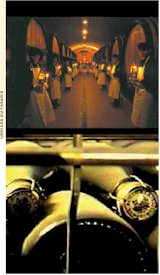
Control of the quality of the grapes remains the key factor for Louis Roederer. Meticulous care is taken to conserve the character of the individual wines whose infinite distinctions will enrich the composition of the Cuvée. Yields from each individual parcel, village or cru are always vinified separately, partly in small tanks partly in wooden vats. Minimal use of malolactic fermentation conserves the fruitiness and freshness of the wines. The period of maturation on lees is twice as long as that traditionally applied in Champagne.
Then there are the finishing touches: the addition of the superb reserve wines that only the House of Louis Roederer ages in oak vats; the meticulous selection of a remarkable range of dosage liqueurs; and the ever-longer ageing of the wines in the cellar after disgorgement. The size, diversity and quality of the Louis Roederer vineyard is a major asset on which House policy depends, because it protects the independence of the House and guarantees control over the style of its wines. The 200 ha area under vine (494 acres) is entirely located in the Grands and Premiers Crus of the three Champagne regions; 65 ha (185 acres) in the Cote des Blancs, where Chardonnay is in its element providing champagnes with their finesse and elegance;. 60 ha (160 acres) in the Montagne de Reims, planted with Pinot Noir that gives champagnes their strength and body; 75 ha (149 acres) in the Vallee de la Marne, where the Pinot Noir adds distinctive fragrance and roundness.
Throughout the year, the Louis Roederer vineyards are tended by nearly 50 vineyard workers who carry out the seasonal tasks required to protect the vines against frosts and disease. Winter is a time for pruning and tying-back; spring a time for training, disbudding and topping. Through summer until harvest time, the grapes swell with sugar and develop their final colour. In July, if the yield threatens to be excessive, the vineyard workers will carry out a green harvest, sacrificing several grape clusters per vine plant so as to encourage the even maturation of the remaining grapes.
The Roederer style is built on precision, patience and attention to detail, reflecting the spirit of perfectionism that is the mark of the House. That perfectionism is apparent in every Cuvée, every nuance and subtle variation that conspires to give each champagne its pleasurable taste: the outstanding smoothness of the bubbles; a taste that balances fruitiness and freshness; a smooth and subtle structure, marked by a delicate vinosity that finishes on a sensation of fullness.
